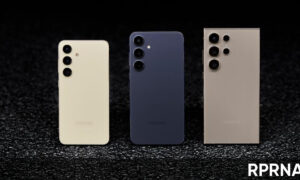In May 2019, Samsung launched the industry’s first 64Mp image sensor for smartphones, and in just 6 months later it brought the 108MP camera sensor, which introduced in the Galaxy S20 Ultra. Now, it seems like Samsung is planning to bring the camera sensors that have resolutions of as high as 600MP.
Human eyes are said to match a resolution of around 500 megapixels (Mp). Compared to most DSLR cameras today that offer 40Mp resolution and flagship smartphones with 12Mp, but Samsung still has a long way to go to be able to match human perception capabilities.
Here’s the list of eligible devices that will get the One UI 3.0/Android 11
In the 108Mp image sensor, the ISOCELL Bright HM1, Samsung implemented ‘Nonacell technology,’ which dramatically increases the number of light absorption pixels is capable of.
Compared to previous Tetracell technology which features a 2×2 array, the 3×3 pixel structure of Nonacell technology allows, for instance, nine 0.8μm pixels to function as one 2.4-μm pixel. This also mitigates the issue raised by low-light settings where light information is often scarce. In 2019, Samsung was also the first to introduce image sensors based on 0.7μm pixels.
Join our Samsung Channel on Telegram:
Human eye and 600MP camera:
Most cameras today can only take pictures that are visible to the human eye at wavelengths between 450 and 750 nanometers (nm). Sensors able to detect light wavelengths outside of that range are hard to come by, but their use can benefit a wide range of areas.
For example, image sensors equipped for ultraviolet light perception can be used for diagnosing skin cancer by capturing pictures to showcase healthy cells and cancerous cells in different colors.
Infrared image sensors can also be harnessed for more efficient quality control in agriculture and other industries. Somewhere in the future, we might even be able to have sensors that can see microbes not visible to the naked eye.
In addition, Samsung is also looking into other types of sensors that can register smells or tastes. Sensors that even go beyond human senses will soon become an integral part of our daily lives.
“To date, the major applications for image sensors have been in the smartphones field, but this is expected to expand soon into other rapidly-emerging fields such as autonomous vehicles, IoT and drones. Samsung is proud to have been leading the small-pixel, high-resolution sensor trend that will continue through 2020 and beyond, and is prepared to ride the next wave of technological innovation with a comprehensive product portfolio that addresses the diverse needs of device manufacturers. Through relentless innovation, we are determined to open up endless possibilities in pixel technologies that might even deliver image sensors that can capture more detail than the human eye.”















